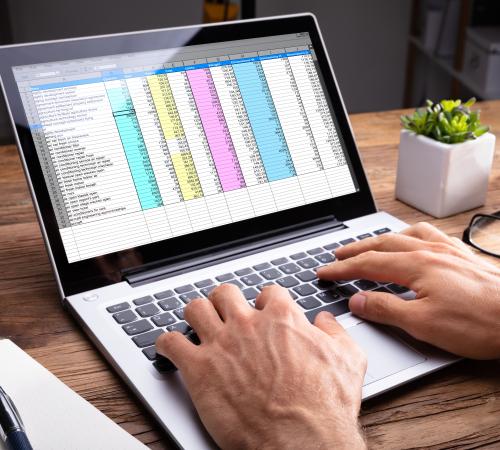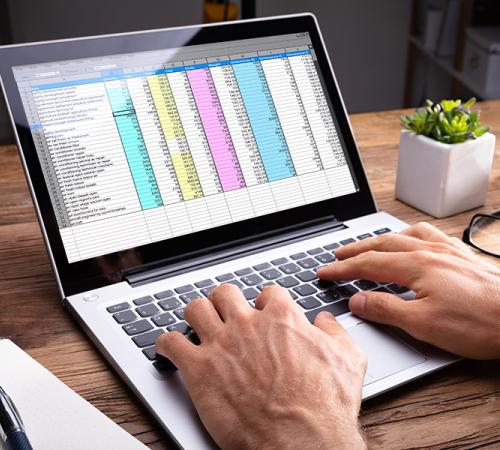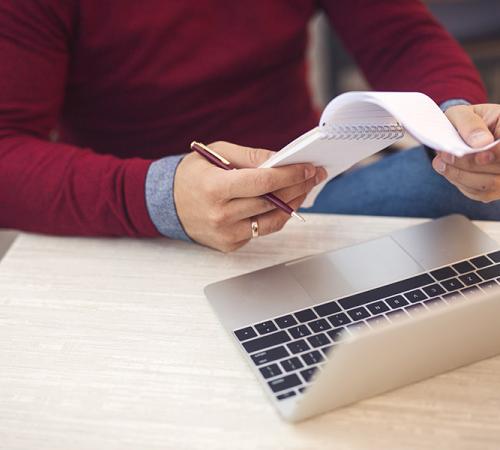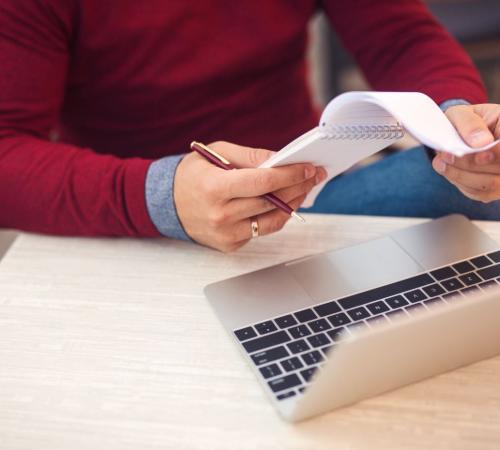

What is a Self Assessment tax return?
The Self Assessment tax return is a way some people pay tax in the UK. Many employed people find tax is automatically calculated and deducted from their wages. But this doesn’t cover everyone. If you’re entirely self-employed, for instance, no tax records will be picked up in this way. As a result, the Self Assessment tax return allows a wide range of people to report their earnings and pay the tax they owe by law.
In practical terms, Self Assessment means filling in a form – either on paper or online – to inform HM Revenue and Customs (HMRC) about your income and expenses.
Do I need to fill in a Self Assessment tax return?
Anyone who has to inform HMRC about their income may need to fill out a Self Assessment tax return. Under UK law, it is your responsibility to disclose taxable earnings where necessary. So you won’t always receive an invitation to file a tax return – especially if it’s the first time you need to do so.
You’ll need to fill out a Self Assessment tax return if you are self-employed, either as a sole trader or a partner in a business partnership. There are exemptions for sole traders who earned less than £1,000 in the last tax year.
However, there are reasons why you might choose to file a tax return even if your sole trading generates less than £1,000 per year in earnings. Filling in a Self Assessment tax return can help if you need to prove your self-employed status to claim certain childcare or maternity allowances, or income tax relief.
Self Assessment tax returns are also designed for people who have untaxed income – even if their main income comes from employment or a pension.
Such untaxed income might be from:
- A property rental
- Income from overseas, or income paid from the UK if you also live overseas
- Commission and bonuses exceeding £2,500
- Interest paid on savings, or returns on investments – where this income exceeds £10,000
- Dividends
You might also need to fill in a Self Assessment tax return if you:
- Earned more than £100,000 in the last tax year, even if this income came from employment wages or pensions
- Rely on the State Pension as your sole source of income, and this exceeds your Personal Allowance (external link)
- Are subject to different tax rules because of your occupation. For instance, if you are a minister of religion or if you invest personal wealth as a ‘name’ in the Lloyd’s of London syndicate
- Owe capital gains tax
- Are the trustee of a trust or benefit scheme, or a financial representative of someone who has died
- Claim child benefit and earn more than £50,000
Many directors of limited companies will be invited to file a Self Assessment tax return. However, there’s a chance you won’t need to complete this if your entire income is taxed through PAYE. It’s worth noting that there may be other reasons why a company director needs to file a tax return though, such as if you are the trustee of a registered pension scheme.
If you are unsure whether you need to fill out a Self Assessment tax return, call the HMRC Self Assessment helpline on 0300 200 3310 for guidance on your situation.
What information will I need to fill in a Self Assessment tax return?
To get started with your Self Assessment tax return, you’ll first need to register (external link). For this, you’ll generally need:
- Your National Insurance number
- Your Government Gateway user ID and password, or to create one
- Personal details, such as your name and address
If you’re self-employed, you can register online. But you may have to use the SA1 form (external link) if you need to file a Self Assessment return for other reasons.
If you’ve never submitted a Self Assessment tax return before, the deadline for registration is 5 October.
Registration gives you a Unique Taxpayer Reference (UTR), which is delivered by post. When this arrives, you can begin to fill out your Self Assessment tax return. It’s possible to save this as you go if you need to gather more information.
To fill in the full Self Assessment tax return form, you may need:
- Your UTR, National Insurance number, issue address and personal details
- Your employer reference, if you have one
- Details of your gross income, covering the full tax year. Keep records of pay slips, invoices, receipts, statements, your P60 and P45 in case you’re asked for evidence
- Details of self-employment expenses
- A list of charity or pension contributions that may entitle you to tax relief
- Student loan repayment figures for the tax year
- Information about any taxable Covid-19 support payments you received
For help with what to include, use the government’s Self Assessment helpsheets (external link).
How to fill in a Self Assessment tax return
How to fill in the SA100
Your details
First, fill in your details. As well as your UTR, National Insurance number and employer reference if you have one, take care to include both an issue address – your name and address – and an office address for HMRC.
It helps to include your date of birth and phone number here too. If your name or address has changed, include the updated details and the date this happened.
Income
This is the main part of your Self Assessment tax return. You’ll want to ensure all income details are as accurate as possible.
First, use the tick boxes to indicate where your income is from – employment, self-employment, a partnership, UK property, foreign income, trusts or capital gains. You may need to fill in supplementary pages based on the boxes you tick here.
Next, fill the boxes overleaf to detail interest, dividends, pensions and benefits.
Tax reliefs
This section helps HMRC to identify tax reliefs you might be entitled to. Include information about payments into pension schemes – except where these are made by your employer. You’ll also be invited to notify HMRC about charitable giving within the tax year, including one-off payments, gifted shares and Gift Aid.
If you, your spouse or civil partner is registered blind, tick the relevant box to receive Blind Person’s Allowance.
Student loan and postgraduate loan repayments
Fill in details about your student loan repayments here, including any deductions already made by your employer. This will be used to calculate any additional amounts due.
High Income Child Benefit Charge
Tell HMRC about your child benefit payments if your income was over £50,000 during the tax year.
Incorrectly claimed Covid-19 support scheme payments
If you accidentally or incorrectly claimed support under the Coronavirus Job Retention Scheme (furlough), the Eat Out to Help Out Scheme or Self-Employment Income Support Scheme (SEISS), this section gives you the opportunity to inform HMRC.
Marriage Allowance
Use this section to transfer up to £1,260 of your tax-free Personal Allowance to your spouse or civil partner if your income was less than £12,570 in the tax year.
To do so, you’ll need to provide HMRC with your spouse or civil partner’s name, National Insurance number, date of birth and the date of your union.
Tax calculations
Finally, the Self Assessment tax return form includes a section dedicated to tax calculations. If you file your return online, or the paper form is returned by 31 October, HMRC will run the numbers on your behalf.
Include additional details here which may impact the calculations, such as any tax refunds paid within the current tax year. If you’ve been told you owe tax, you can also state your repayment preferences here.
If you have a tax adviser, include their details, then fill in the declarations and sign.
How to complete the supplementary pages of a Self Assessment tax return
Supplementary pages help HMRC to collect information from different groups of people. You’ll need to fill these in if:
- You’re self-employed and earned more than £1,000 – a separate ‘Self-employment’ form is needed for each business
- You’re employed – the ‘Employment’ page allows you to detail earnings as a staff member, director or agency worker in the tax year
- You’re in a partnership – the ‘Partnership’ page then applies
- You earn money from UK property – use the ‘UK Property’ pages
- You receive foreign income – the ‘Foreign’ pages allow you to declare this
- You sold assets within the tax year – if so, fill in the ‘Capital Gains Summary’ page
- You think you are entitled to less common tax relief types – the ‘Additional Information’ pages can be used to note this. You might also need to fill these in if you have used a disclosed tax avoidance scheme.
Self-employed (SA103)
File your self-employment income details using this page, plus any expenses related to your self-employment. You might include receipts and a three-line account to evidence this.
Find out more about how to file information for tax and National Insurance when you’re self-employed.
UK property income (SA105)
Landlords, including those who let holiday homes or rooms in their own home, need to submit a ‘UK Property’ page if they have earned more than £1,000 in this way.
Include details of the amount you have earned from rental income, plus relevant expenses.
Include income from land rental, furnishing fees, local authority grants, Covid-19 support payments, ground rents and event fees – such as those paid by a film crew for access to your property.
Capital gains (SA108)
Capital gains tax is paid on profits from selling or exchanging an asset, such as a second home, personal possessions worth more than £6,000, business assets or shares.
If you owe capital gains tax for the relevant tax year, you’ll need to include details of this within your Self Assessment tax return.
Include information about the number of ‘disposals’, or exchanges, of assets. Additionally, list the purchase price for each, plus any proceeds and losses incurred within the year.
Allowable costs, including the amount you originally paid for the asset, the cost of improvements and Stamp Duty, should also be listed here.
How to fill in your Self Assessment tax return online
To fill in your Self Assessment tax return online, head to the government’s website (external link). If you need to see how your details compare to previous returns, you can also do this here.
You simply need a Government Gateway ID to log in.
If you haven’t filed a tax return before, you’ll also need to register – ensure you do this in good time, since a UTR will be sent by post. You could also receive a fine if you fail to register by 5 October.
Filing a Self Assessment tax return online can simplify the process and cut costs, since you won’t need to send financial details in the post.
The deadline for filing a paper tax return is also earlier, falling on 31 October. When you file online, midnight on 31 January is the deadline – so you get an additional three months to gather your materials.
Some people cannot file a tax return online. You’ll need to download a form or use corporate software if you:
- Earn income in a partnership
- Are the trustee of an estate
- Live abroad as a non-resident, or did within the tax year
- Need to report chargeable gains such as insurance payments
- Face distinct tax rules because of your occupation
How do I pay for my Self Assessment tax bill?
Once your Self Assessment tax return is filed, you’ll receive a tax bill. This may not be the highlight of the business calendar, but it’s important nonetheless. On-time payments help you to avoid fines and interest fees.
There are several ways to pay your Self Assessment tax bill, including by:
- Bank transfer
- Debit card, including your corporate card
- Corporate credit card
- Direct debit
- Bacs (Bankers Automated Clearing Services), if you can wait three days for clearance
- CHAPS (Clearing House Automated Payment System)
- Cheque
If you find your tax budgeting has missed the mark this year, you may also be able to pay in instalments. However, this option may gather interest.
You can also make advance payments against next year’s tax bill if you find this helps you to put the money aside. When you file your next tax return, these prepayments go towards settling the final sum.
Time to Pay service
Can’t pay your tax bill on time? Running a business can have its ups and downs, so sometimes this happens. HMRC’s Time to Pay service helps people who owe debt to set up a payment plan. Notifying HMRC as soon as possible – and before your tax deadline – could mean you avoid fines.
Time to Pay allows you to set up a plan so you can pay off your debt in instalments. You can only use this service if you owe £30,000 or less, your tax returns are up to date, and you don’t owe anything else to HMRC. Applications close 60 days after the payment deadline.
What happens if you make a mistake on your tax return?
Mistakes on your tax return can lead to penalties, since it’s your responsibility to ensure information is accurate. You might also face an unexpected tax bill so it’s a good idea to always take your time and double-check your form before submitting it.
If you think you have made a mistake in your Self Assessment tax return, it’s possible to make amendments for up to one year. You can do this online or by post, depending on how you originally filed the tax return.
Submitting your Self Assessment tax return is an important step for many business owners and self-employed professionals. So taking the time to avoid mistakes can be beneficial.
You might find it helpful to fill your tax return in online, where you can save details, see how they compare to your records and return later.
Starting early could also help. Nearly 66,500 ‘early birds’ filed their returns on the first day of the tax year in 2022, according to HMRC [1].
Filing at the last minute could create more room for mistakes and make it difficult to collect financial records. Therefore, you may find it’s helpful to start the process with a few months to spare – with your tax return in hand, you can focus on business as usual.
Disclaimer:
At Hiscox, we want to help your small business thrive. Our blog has many articles you may find relevant and useful as your business grows. But these articles aren’t professional advice. So, to find out more on a subject we cover here, please seek professional assistance.




